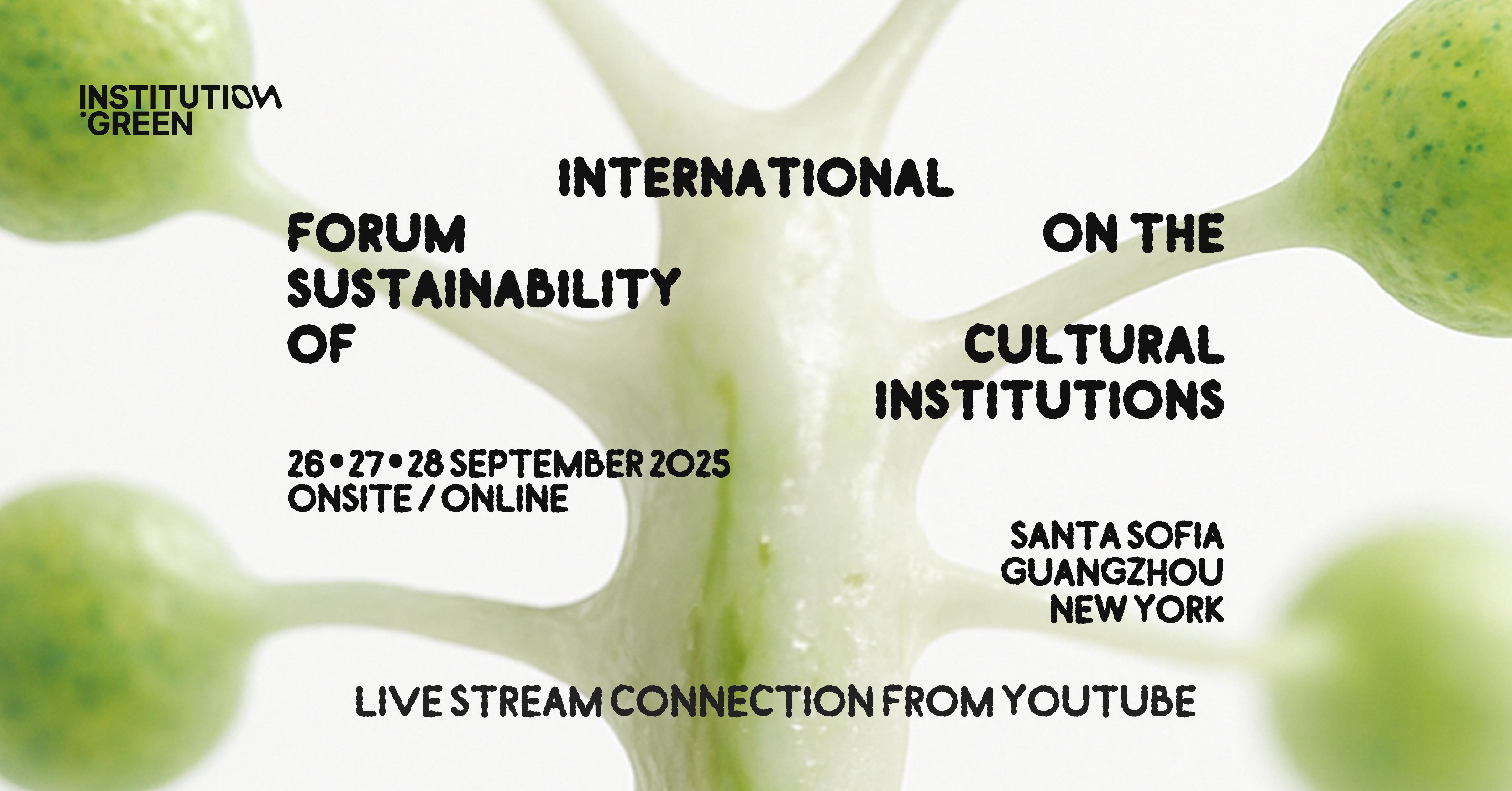Art + Tech Director, Curator, Writer, Publisher
Office address: mm:museum [Media Majlis] @ Northwestern Qatar, Education City, Doha, Qatar
- CuratorWork / CuratorView is an artsphere website
Talk for International Forum on the Sustainability of Cultural Institutions, Guangzhou / New York / Santa Sofia / online
Table 6 - Digital Technologies
September 27th, 2025, 12:00-14:00 CET
Moderator: Christina Zheng Yi
Speakers: Alfredo Cramerotti (Media Majlis Museum), Nils Gallist (Live Performance 3D Artist), Zhao Jie (Tianjin Academy of Fine Arts), Echo Luo (Artist), Li Men-Zhi (Guangzhou Roof Art Center), Masayuki Sono (Clouds.AO), Gu Zhen-Qing (Curator)
Abstract
Digital technology has become an integral component of cultural ecosystems—serving not only as a medium for dissemination and creation but also as infrastructure that reshapes cultural production, management, and experience. This roundtable, themed “Digital Technologies: Tools, Languages, and Infrastructure for Cultural Sustainability," brings together international curators, artists, researchers, and technology experts to explore how digital technologies empower sustainable operations in cultural institutions while critically examining their environmental and social costs.
The discussion will unfold across multiple dimensions: how digital tools enhance accessibility, efficiency (e.g., data-driven curation), and transparency (e.g., blockchain for art provenance); how immersive technologies and "dematerialized" practices reduce the ecological footprint of cultural production; and how infrastructures like open-source platforms and low-carbon computing balance innovation with responsibility.
Amid accelerating technological advancements, this forum asks: Can we cultivate an inclusive and regenerative digital cultural ecosystem? How might interdisciplinary collaboration embed environmental justice and social equity into the foundational logic of technological design?
These conversations aim to provide critical guidance for the future of cultural institutions.
Main questions on which the discussion developed
1. How can digital technologies help tackle the paradox of cultural sustainability? For example, through tools like blockchain for art provenance, data-driven curation, or low-carbon computing. What real changes have you seen in practice, and what challenges still remain?
2. Immersive and digital practices may reduce physical waste, but they also create hidden costs—like server energy use or fast hardware turnover. In your work, how can we balance the push for innovative digital projects with the need for real environmental responsibility?
3. What kinds of collaborations are most effective to ensure that new technologies embed values like social equity and environmental justice? What are strong examples of cooperation between art institutions, technology teams, researchers, or even final users?
